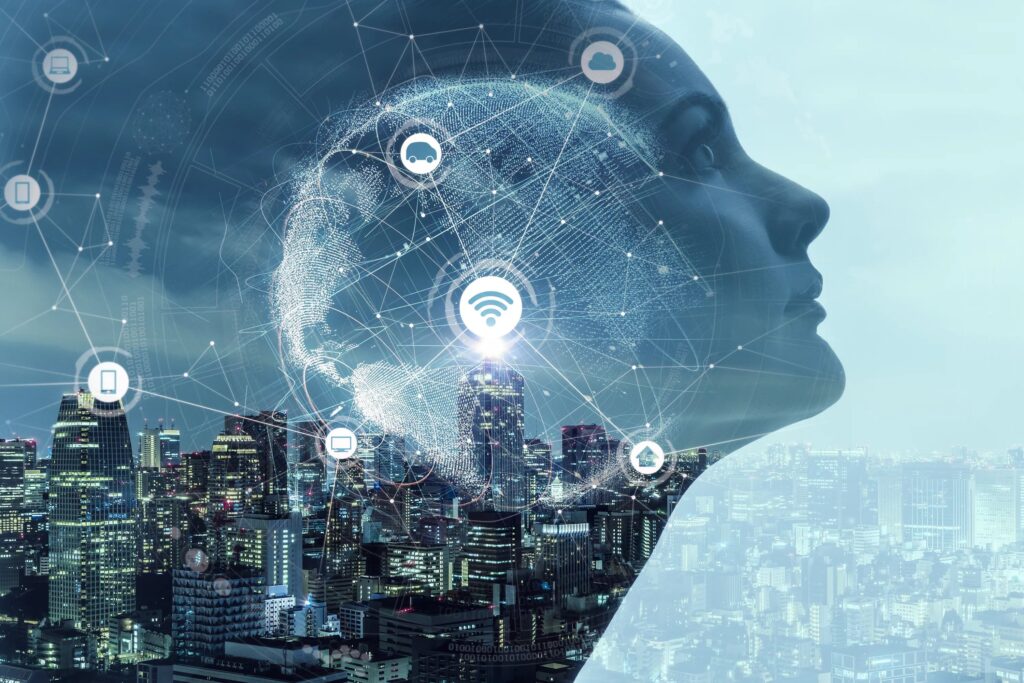In today’s ever-shifting landscape of education, the symbiotic relationship between technology and learning has become increasingly prominent. The infusion of modern technology into the educational sphere serves as both a potential distraction and a catalyst for student engagement that has sparked a dichotomy of effects.
Across the span of recent decades, technological strides have significantly impacted almost every part of our lives, including education, ushering in a paradigm shift in traditional educational approaches. The undeniable influence of technology on education unfolds as a dynamic force, reshaping the classroom experience and redefining the essence of learning.
The transformative influence of technology on education becomes palpable through its role in diverging attention from studies and fostering enriched learning environments. As we navigate the unfolding digital era, innovative technological developments become indispensable components of the educational process. This revolution extends beyond access to resources of traditional classrooms, heralding an era where interactivity becomes the cornerstone of improved communication and elevated academic outcomes.
The digital age’s impact becomes especially evident in the vast repository of educational resources now effortlessly accessible via the internet. From audio files and images to videos and eBooks, the online realm unfolds as a treasure trove of knowledge, encapsulating the essence of modern learning. This accessibility, however, transcends the mere consumption of information, offering students a diverse array of learning opportunities that shape the present educational landscape and illuminate a path forward into the future. As we explore the nuanced ways modern technology shapes education today and its profound implications for tomorrow, we embark on a journey to unravel the transformative power that technological integration wields in sculpting the essence of the educational journey.
Enhanced Student Engagement
With the advent of technology, students are now more encouraged to participate actively in classroom activities. Many students feel apprehensive about speaking to their peers, which hinders their participation. However, online classes have reversed this effect by providing a comfortable environment for students to contribute through discussion boards and other interactive platforms. As a result, lessons become more exciting and engaging. Additionally, online learning facilitates communication and seeking assistance from peers, eliminating the potential awkwardness of face-to-face interaction.
Automation and Increased Efficiency
Technology has revolutionized various aspects of our lives and is pivotal in today’s society. It has significantly impacted education, making tasks that were once manual now easily automated. Critical and complex processes can be executed with improved efficiency. Integrating computers and other devices in education has simplified knowledge dissemination for teachers and enhanced student learning. Consequently, the utilization of technology has streamlined the teaching and learning processes, making them more efficient and enjoyable, thanks to the efforts of software developers.
Enhanced Accessibility
Undoubtedly, technology has made the lives of learners more convenient. As a modern student, you can access numerous tools that foster interest in your studies. For instance, project work and presentations can be created using various software, eliminating the need for pen and paper. Lightweight devices like iPads have replaced heavy textbooks and notebooks, while reading eBooks offers a more convenient alternative. Online libraries, accessible from anywhere, have made vast amounts of information readily available to teachers, researchers, and students worldwide simultaneously. Storing data has also become effortless, with even small flash drives capable of holding massive amounts of information. Copying, pasting, and typing information takes seconds, and modern computers offer efficient and robust data storage capabilities. This convenience surpasses traditional methods of managing hard copies in binders and other bulky storage options.
Utilize Technology for Assignment Assistance
As a college student, you have the advantage of leveraging technology to aid your learning journey. For instance, when faced with an essay writing assignment, such as crafting a personal statement, you need not worry if writing isn’t your forte. You can seek the assistance of professional personal statement writers for hire. By utilizing their expertise and having more free time, you can ensure that the work you submit yields favorable results, thereby contributing to your overall educational progress.
Increased Opportunities for Collaboration
One remarkable impact of technology in education is the ability to communicate and collaborate with others more effectively. In the past, students within classrooms had limited opportunities for collaboration, often restricted to their immediate surroundings. However, thanks to technology, students like yourself now have various collaborative and communicative options. For instance, in a rural classroom, students can learn about far-off continents by following scientific expeditions taking place there. They can read blog posts, view images and photos, email questions to the scientists, and even engage in live chats with them. Technology-based tools enable you to collaborate with your peers on group projects, transcending the physical confines of the classroom. The traditional walls of learning establishments are no longer barriers, as technology has opened up new avenues for communication, collaboration, and learning.
Envisioning the Future of Education

Peering into the next five to ten years, the education sector appears poised for a radical transformation, propelling us toward a fully digitalized system that fundamentally reshapes the learning experience.
- Evolving Beyond Textbooks:
The traditional textbook may become extinct in the foreseeable future as an overwhelming 75% of educators anticipate that textbooks will be replaced by digital versions and applications by 2026. This seismic shift not only impacts students but necessitates a paradigmatic adjustment for educators as well. Integrating innovative technologies will demand that teachers acquire new skills to navigate this dynamic educational landscape.
- Gamification and Virtual Reality (VR):
As education hurtles into the digital era, educators anticipate integrating gamification and Virtual Reality (VR) technologies. This forward-looking approach aims to enhance comprehension of new material and encourage student engagement by transforming the learning experience into an interactive video game. The burgeoning influence of the gaming industry adds weight to the potential of this experiment becoming the cornerstone of future education. Gamification’s proven ability to make learning engaging and enjoyable games while improving knowledge retention over time positions it as a compelling pedagogical tool. Gamification lowers the mental barriers to information absorption. It has been proven that gamification motivates learners, especially when the gamified learning content has been created to become highly engaging.
- Holograms and 3D Learning:
The visual dimension of learning, historically represented by images and diagrams in textbooks, is on the brink of a revolutionary leap. Emerging technologies like holograms and 3D (potentially even 4D or 5D) are set to replace traditional visual aids. This transformative shift holds the promise of immersing students in dynamic, interactive learning experiences, offering insights into historical figures, the Earth, space, and beyond.
- The Rise of Online Education:
While online education is not a new concept, the future promises a paradigmatic evolution of this mode of learning. Online schools are poised to become autonomous entities, issuing legitimate diplomas and providing diverse opportunities. This trajectory foresees online education branching out as a fully-fledged sector, reshaping the traditional notions of academic accreditation.
- Personalized Learning Models:
Acknowledging the uniqueness of every student, the future of education envisions personalized learning models as the cornerstone of education. This entails the development of self-learning software designed to adapt to the individual needs of each student. The result is an educational ecosystem where learners can achieve optimal results through personalized, convenient learning pathways tailored to their distinctive preferences and capabilities.
The Wise Utilization of Technology in Education

Selecting the most suitable software poses a considerable challenge for the teaching community. It is imperative to understand that technology is not an adversary that distracts students from their studies. On the contrary, technology has evolved into an expansive realm of invaluable resources that have the potential to significantly enhance the quality of learning, rendering it more engaging and accessible.
Today, many websites and platforms have emerged, offering tremendous assistance to students in their exam preparations. These resources are immensely beneficial for students preparing for examinations when utilized properly for their studies. Online platforms provide access to a wealth of educational materials, practice exams, interactive quizzes, and tutorials to reinforce students’ understanding and mastery of the subject matter. Through these sites, students can benefit from diverse learning resources, helping them grasp complex concepts and strengthen their knowledge. Contrary to being an opposing force that fosters distractions, technology, when sensibly employed, emerges as a powerful ally in pursuing academic excellence.
Understanding that technology is not inherently detrimental but a catalyst for positive educational transformations is paramount. The key lies in guiding students to harness technology conducive to their studies. When wielded appropriately, technology becomes a dynamic force capable of augmenting the learning experience, ultimately empowering students with the tools they need for academic success. The collaborative efforts of educators and students in embracing technology as an ally in education foreshadow a future where the wise usage of technological resources becomes synonymous with educational advancement.
FAQ’s – Frequently Asked Questions
1. What is the role of technology in enhancing the learning experience today?
Technology enhances the learning experience through easy access to various educational materials. Additionally, it stimulates interactive and fun classroom activities, thus allowing individualized education as per individual needs.
2. Can technology help bridge the educational gap for remote learners?
Yes! Technology bridges this gap by providing online courses, virtual classrooms, and collaborative platforms for remote students. This makes education accessible to students worldwide so that they can connect with educators and fellow learners from all over the globe.
3. What will be the role of new technologies such as Virtual Reality (VR) and Artificial Intelligence (AI) in future education?
VR and AI, emerging technologies, can significantly transform education. While VR creates immersive learning environments, AI personalizes instruction, offers smart tutoring, and automates administrative tasks. Consequently, this will improve quality across education levels on a global scale.
4. What are the ways technology colludes with students to cooperate?
Digital platforms, discussion boards, and video conferencing tools allow technology to encourage collaboration among students. They help in seamless communication and sharing of ideas and group project partnerships that override geographical boundaries and create a global learning community.
5. Are there any cons to implementing technology in education?
Although technology possesses abundant advantages, some possible disadvantages include too much screen time anxiety, digital literacy being mandatory, and the possibility of information overload. To record effective learning outcomes, there should be a balance between them while ensuring that they are used responsibly and for the proper purposes.

